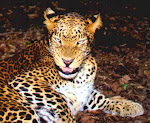Birds are one of the wonders of
Nature, and we men have been in awe of them since we first understood who we
were. They brighten up our world in flashes of colored movement, and they put food on the table for our families.
Recent studies suggest that birds are truly the last tangible link with the
extinct land dinosaurs. Possibly even more so then the reptiles, such as the
snake, turtle, lizard and crocodile. It further suggest that at least some of
these dinosaurs were warm blooded and cared for their young in a similar manor
as birds today. Surely, there is so much diversity among birds that an
assumption such as this must have validity.
In the natural history museum in New Orleans there are shelves stacked upon shelves of displayed birds from around the world, painstakingly collected by Ornithologists. The collecting and study of birds is one of the oldest forms of zoology, and when big game hunters were measuring the size of horns to compare a mounted commemoration, ornithologists were already mapping out migratory journeys.
Scientists would prepare a specimen and meticulously measure and categorize by color and the most subtly of variation. Those specimens are a remnant of these times. It was the modern introduction of photography, especially color photography, and the use of hand held and portable binoculars, that brought more sophisticated observational skills to the field. Today, it is no longer necessary to shoot a specimen to study it.
Other animals on our planet are far easier to study then birds. For one thing it is virtually impossible to distinguish one of the same species from another. In the 1920’s an amazing observer and artist Jean-Jacques Audubon devised a method for telling them apart. As he visited his parent’s home in Pennsylvania he captured several flycatchers and tied colored thread to their legs. He found that those same individuals returned to nest from their southern migration. It was a great finding, but the amazing capacity of birds astound scientist to this very day. They have abilities we can only guess at.
I noticed that one of the seagulls
eating our leftovers in the Gulf of Mexico had its wings sprayed orange, and
several of them, on closer observation, had rings, or bands, on their legs.
Further study is going on. Radio transmitters have been placed on the backs of
some of the larger migratory birds and tracked by satellite. One bird, the
great Albatross, was found to travel
a thousand miles high up in the thermals for a bit of food to bring back to its
nest.
Released penguins with instruments that can measure water pressure are found to dive more then a thousand feet for a snack. And then the new science of genetics can now map the lineage of one species with another, comparing and cross-referencing information that wasn’t even thought of just a few years ago. The study of birds has become a rich and fascinating subject, and the knowledge we have is now known to be just a scratch on the surface of what is yet to be discovered.
Bird watchers are somewhat stereotyped. They have thick glasses, wear suspenders, and are constantly looking for the “Yellow Bellied Sap Sucker.” But we are all bird watchers, admittedly so or not. Our free spirit envies that spec of an eagle gliding on a thermal, and it is always amazing to see a hummingbird flashing scarlet and emerald in our garden.
There are those, like terns, who can navigate from pole to pole, guided by the stars and earth’s magnetic pull, and some who can swim deep in the ocean for a meal then go skipping along high into the air, like a cormorant. Some are overland blurs like the Texas roadrunner and the African secretary bird, and the Louisiana bullbat that dives like a vibrating meteor above our parking lots, is something to behold.
Want to have a bit of fun? Put on your suspenders and thick glasses; then bring your old field glasses, and a couple of six-year-olds into the wilds of your back yard. You will find that there is still a lot of magic left in this old world, old timer, and a six year old can reintroduce you to it.




No comments:
Post a Comment